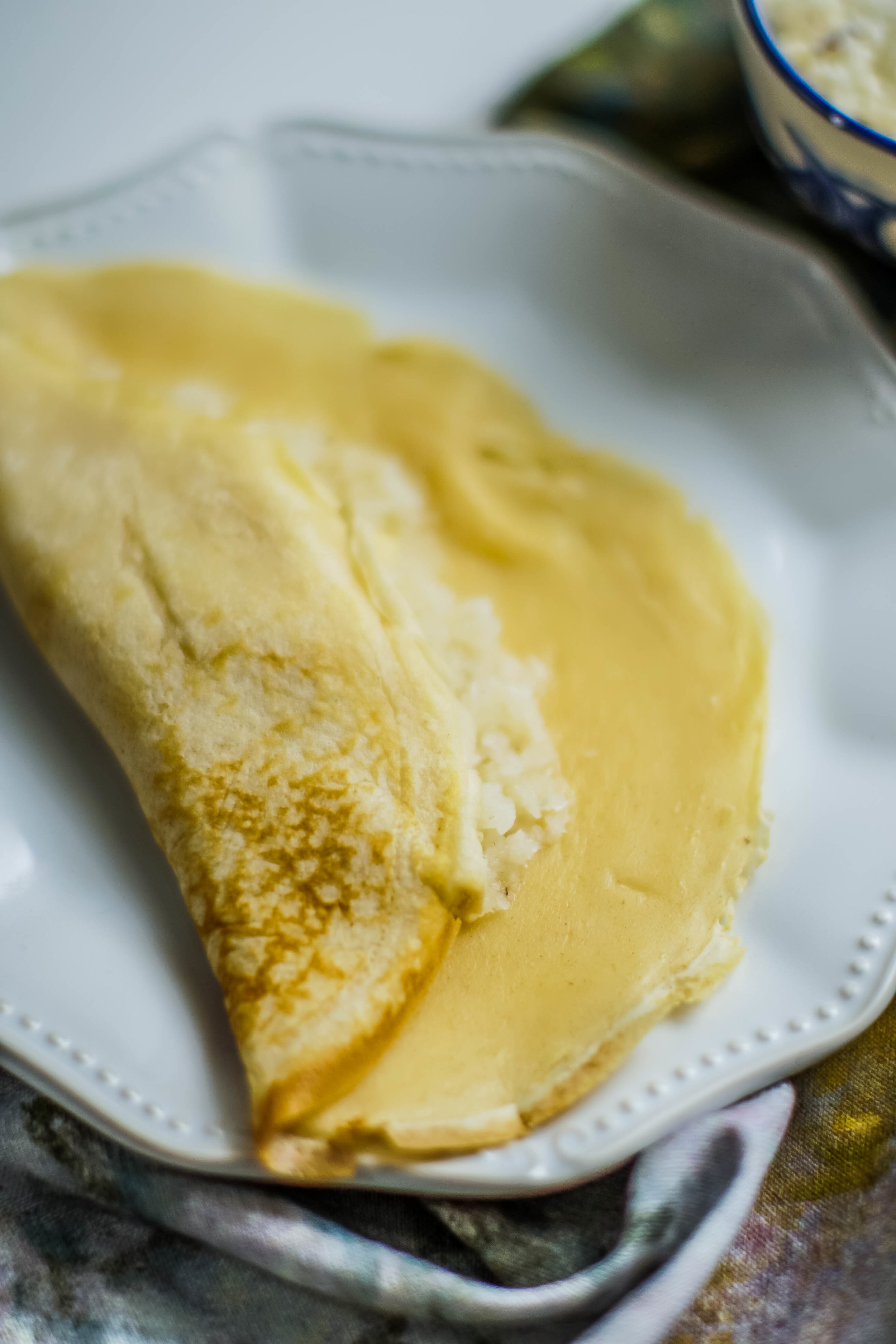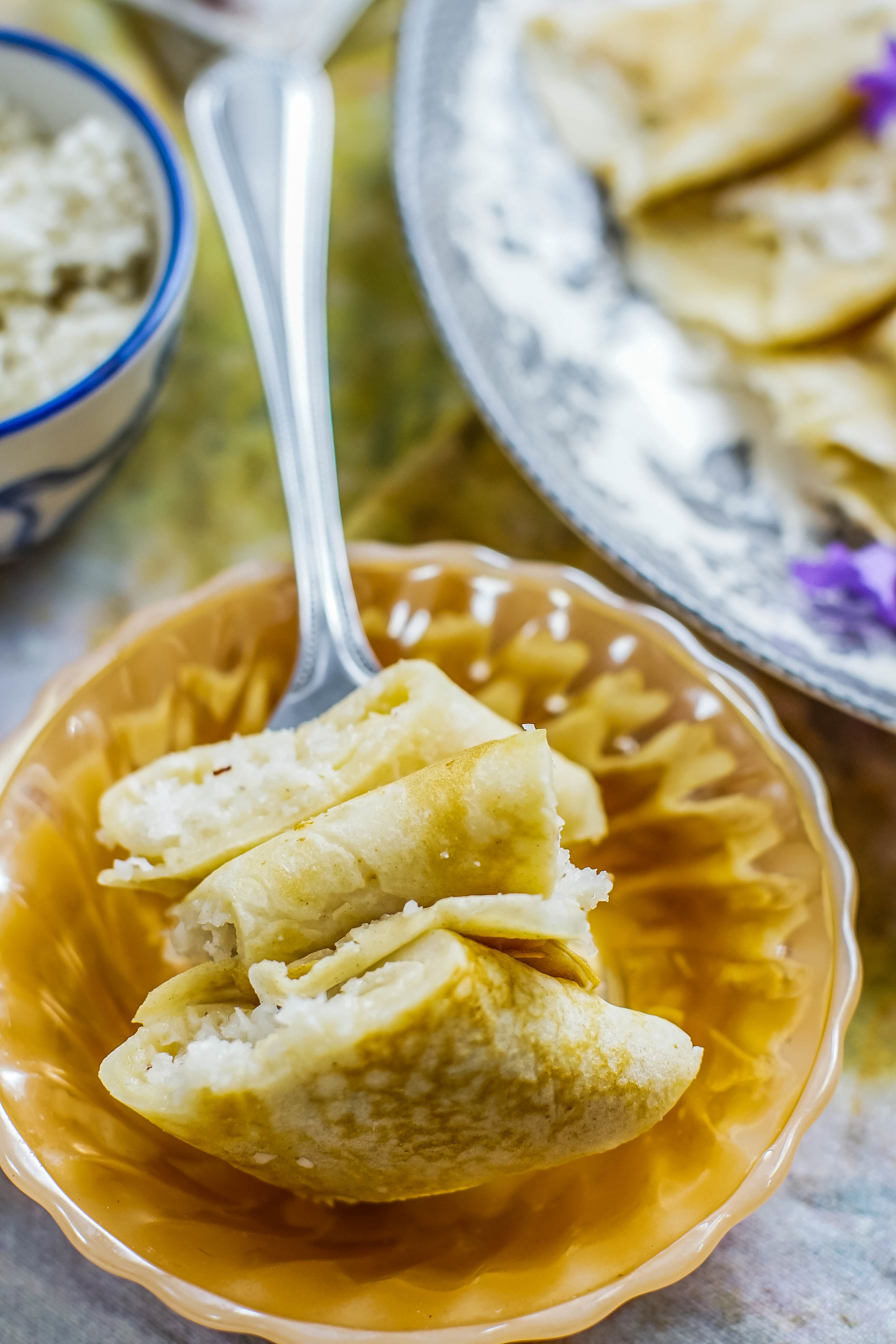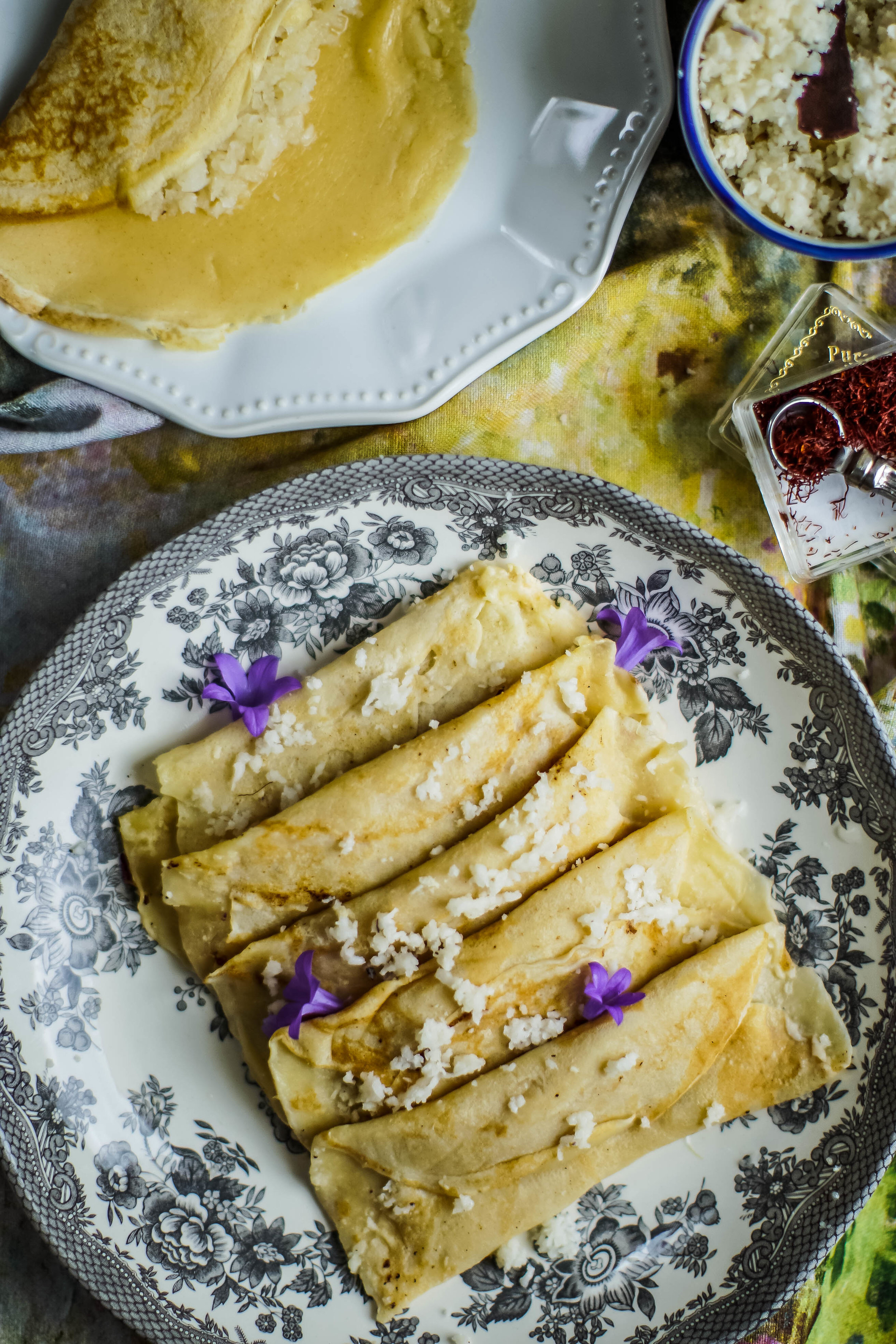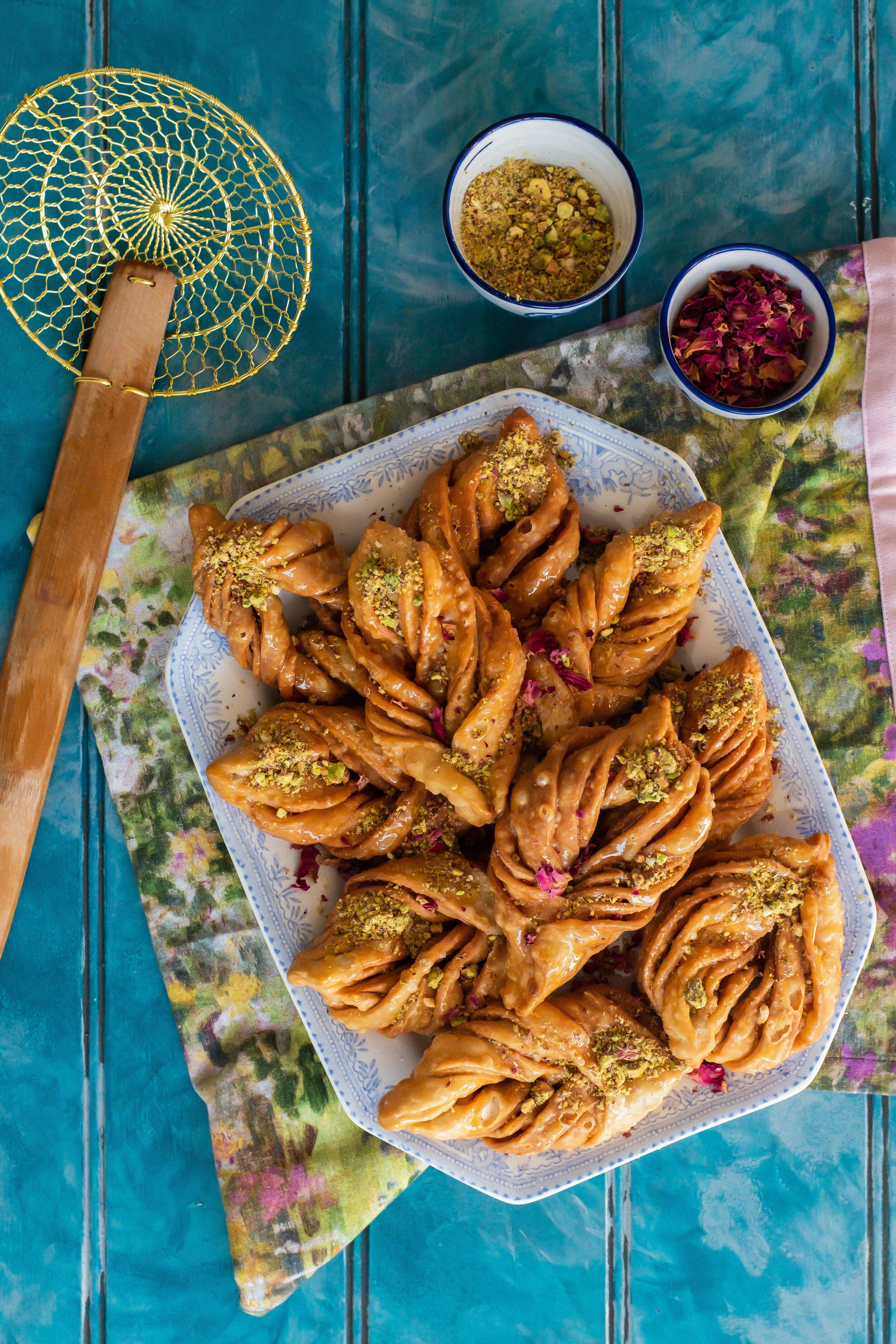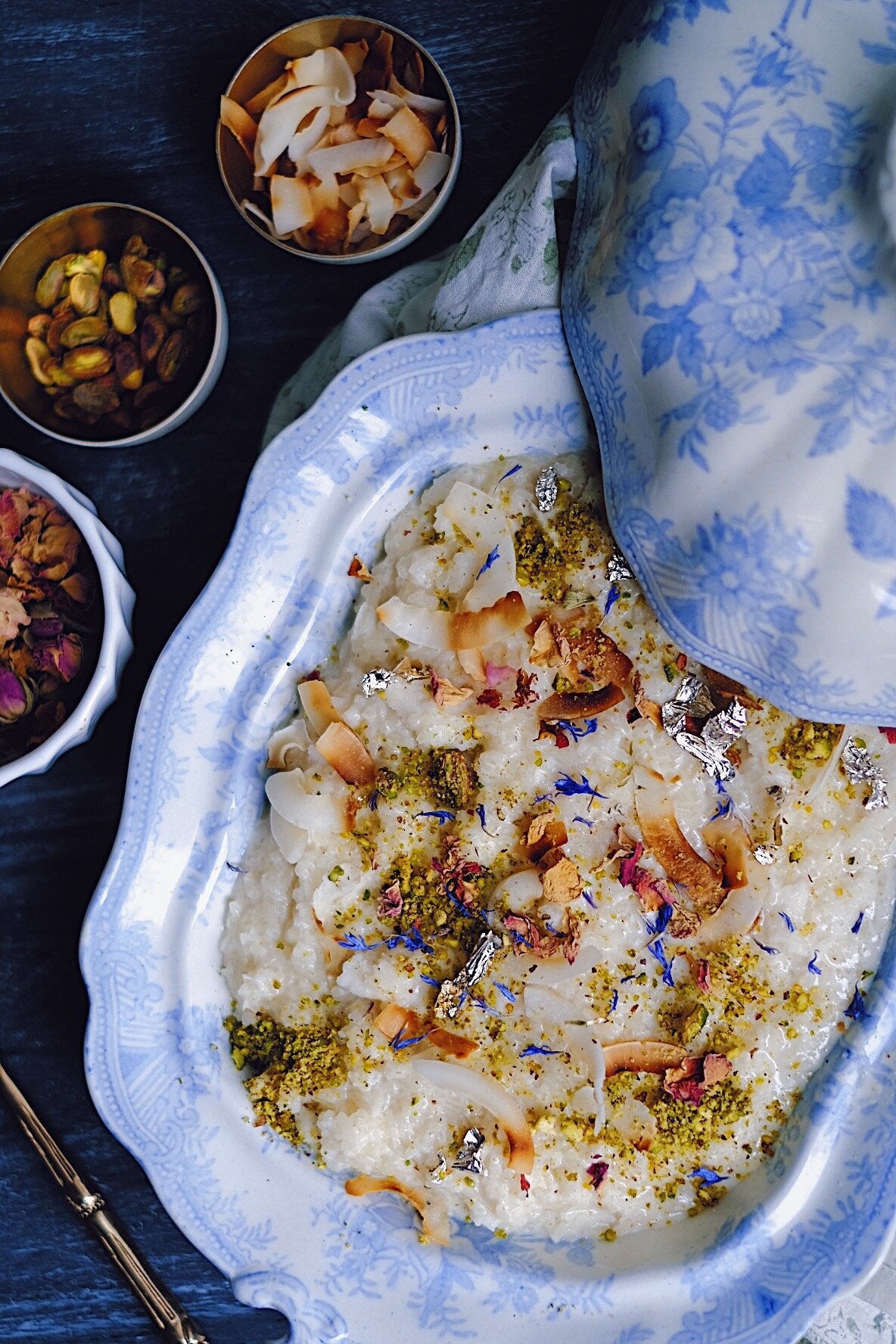Pathishapta (Bengali Crêpes with Coconut Filling)
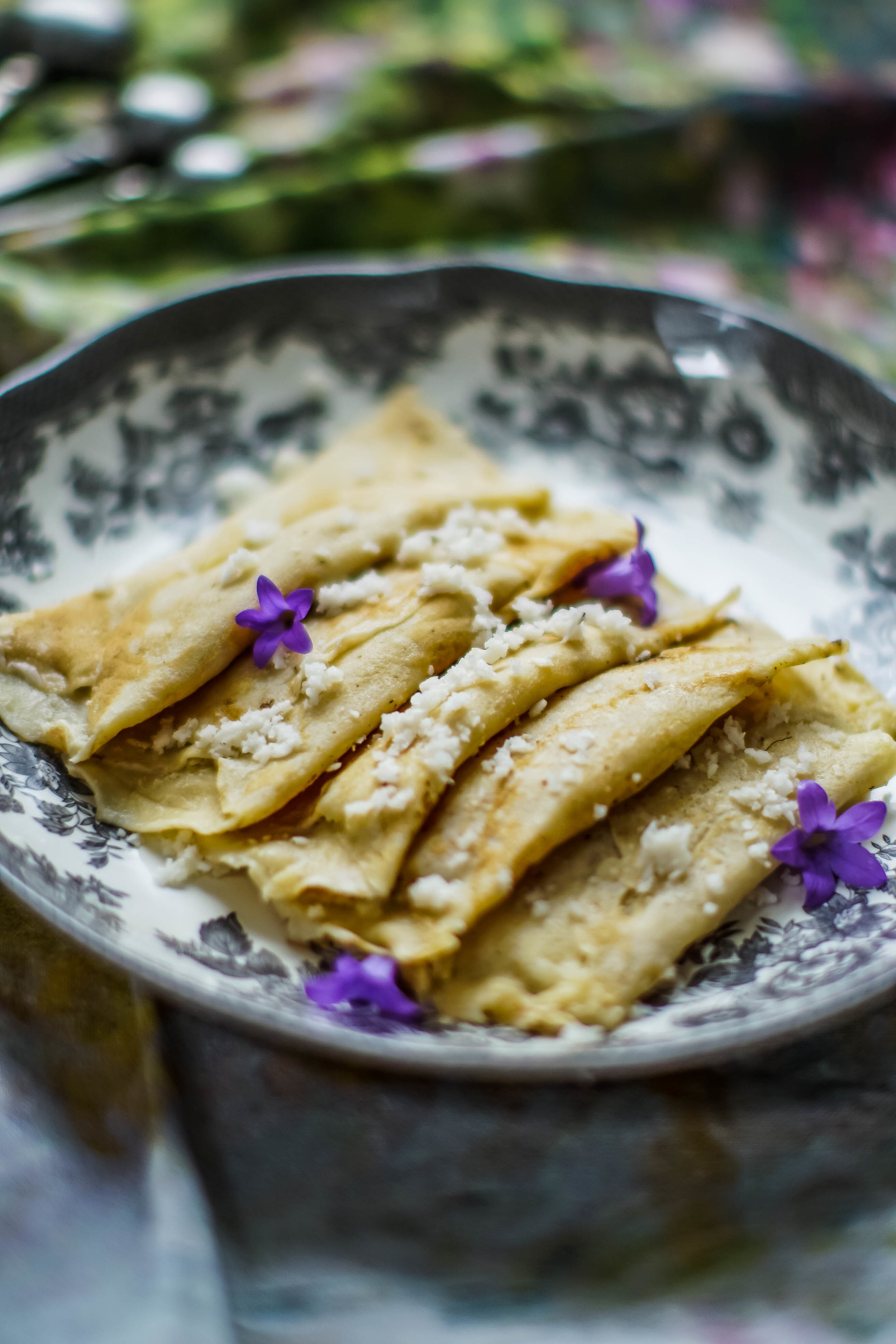
Many memories start (and probably end) with food. Berries, crêpes and sorbets are those things that always conjure up an image of lush, hazy summer days. Perhaps it's the bright sunshine or the approach of Eid that inspired these sweet cravings. These crêpes (or pathishapta, as we Bengalis know them) are delicately laced with sweet, cardamom infused coconut. Pathishapta is not a recipe I'd ever made before, but I have recently acquired a mother in law whose talent in the kitchen puts me to shame! As my curiosity surrounding these Bengali desserts peaked, I set about starting my experiment.
Since they are usually eaten during festivities, I was determined to perfect my mother in law's method by the end of Ramadan. Easier said than done. It turns out I'm a better teacher than a student! What were meant to be light and fluffy discs became thick and engorged, coconut that was meant to be sticky and firm turned into a runny catastrophe. All in all, I have never been so frustrated by what is in essence a stuffed bloody pancake!
The first thing I learned was that butter does not help when trying to create perfectly round discs. After toiling away arduously and tossing several crispy doughy bits in the bin, I decided something had to give! So I used vegetable oil instead. The non-stick pan, while not traditional, was also the only way I could get crêpes to slide off without sticking to the pan. It takes a little patience and practice, but the art can be perfected!
Prep+cooking time: 30 mins
Servings: makes 10-12
Ingredients for Crêpes
2/3 cup all purpose flour
1 cup milk
1 tsp sugar
Vegetable oil to make crepes
Ingredients for coconut filling
3-4 cardamom pods, seeds crushed and skin discarded
2 cups grated coconut (fresh or frozen works)
2 cinnamon sticks
1/2 cup whole milk
Few strands of saffron
1 tsp sugar (or to taste)
Instructions for the coconut filling
Heat up the milk in a saucepan for 5 minutes until it's simmering and combine the sugar and spices. Stir to prevent the milk from burning until the sugar dissolves.
Add coconut to the milk and lower the heat. Fold together for 5 minutes the coconut in until the mixture thickens like a lump.
Leave the coconut and cardamom filling to dry as it cools. It should be moist but not runny.
Instructions for the crêpes
Combine and whisk together all ingredients for the crepes, other than the vegetable oil. It should be lump free. If you're finding it hard to whisk out lumps, run the batter through a sieve. The batter should be thin enough to spread around the pan when swirled.
In a small non stick pan (I used a 16cm diameter pan) over a medium, brush with vegetable oil and pour enough batter to cover the base when swirled. You need to be fast when doing this to create even circles. It's all in the wrist action!
This bit is the tricky bit: while one side is turning pale gold, fill the half cooked crepe with coconut. With a small spatula, fold the sides to envelope the coconut like a roll. Slide the spatula under the pathishapta, turn it over and press the edges together. The reason you should add the coconut filling while still making the crepes is because the pathishapta can be sealed and won't fall out once cooked on both sides.
Repeat the steps for the rest of the batter, brushing the pan every time you make another one.
Serve warm or cold. Sprinkle some coconut if you want or have it with a drizzle of cream.
Variations include:
Coconut on its own or with thickened cream
Coconut sweetened with gudh or jaggery (unrefined cane sugar)
Vermicelli kheer/shemai filling instead of coconut
Sooji halwa filling

